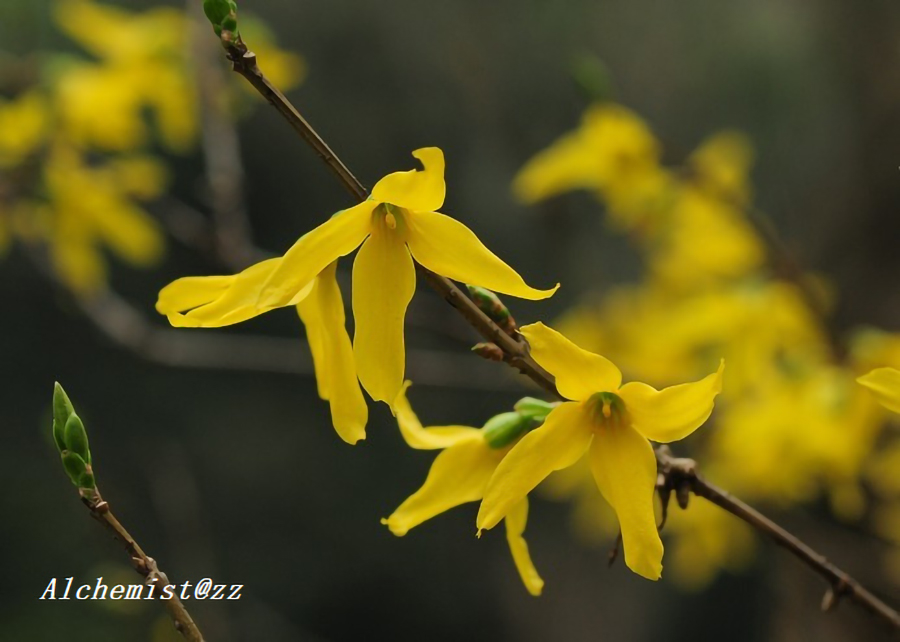- Scientific Name: Forsythia suspensa (Thunb.) Vahl
- Ref: Enum. Pl. Obs. 1:39. 1804
- English Common Name: weeping forsythia, golden-bell
- Chinese Common Name: 连翘 liánqiào
- Japanese Common Name: レンギョウ [連翹] rengyō
- Family: Oleaceae
- Genus: Forsythia
- Distribution: Thickets or grassy areas on slopes, valleys, gullies; 300-2200 m. Anhui, Hebei, Henan, Hubei, Jiangsu (cultivated), Shaanxi, Shandong, Shanxi, Sichuan
- Photo: 03/16/2013
Shrubs. Branches spreading or pendulous; branchlets yellow-brown or gray-brown; internodes hollow. Leaves simple, sometimes 3-parted to 3-foliolate; petiole 0.8-1.5 cm, glabrous or sometimes pubescent; leaf blade ovate, broadly ovate, or elliptic-ovate, 2-10 × 1.5-5 cm, subleathery, glabrous or sometimes pubescent, or abaxially villous, especially along veins, base rounded to cuneate, margin serrate, apex acute. Flowers solitary or 2 to several in leaf axils. Pedicel 5-6 mm. Calyx lobes oblong, (5-)6-7 mm, ciliate. Corolla yellow; tube subequal to calyx lobes; lobes obovate-oblong or oblong, 1.2-2 cm. Pistil 5-7 mm in flowers with stamens 3-5 mm or ca. 3 mm in flowers with stamens 6-7 mm. Capsule ovoid to long ellipsoid, 1.2-2.5 cm × 6-12 mm, with scattered lenticels; stalk 0.7-1.5 cm. Fl. Mar-Apr, fr. Jul-Sep. (Flora of China)
